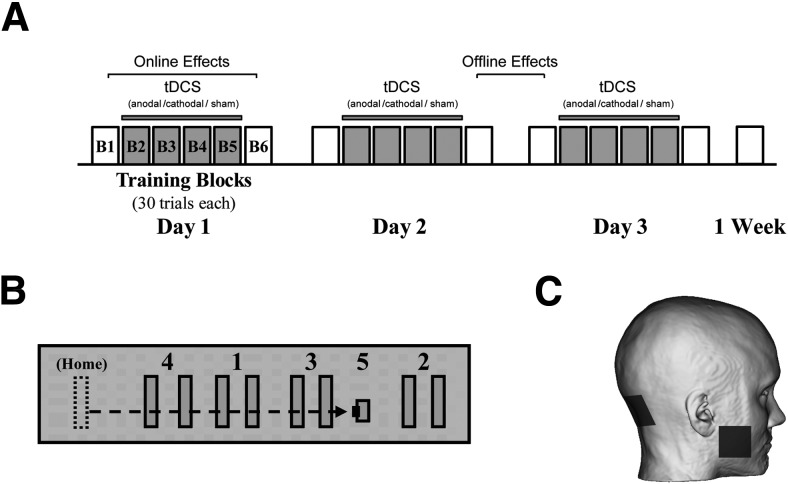Figure 1.
Experimental design. A, Subjects participated in 3 d of motor training, practicing six blocks of 30 trials each day, followed by a 1 week post-test of 30 trials. Two milliamperes of anodal, cathodal, or sham tDCS was applied over the right cerebellar cortex during Blocks 2–5 of training (gray blocks). On-line effects were calculated as the sum of the difference between Blocks 1 and 6 for each day. Off-line gains were estimated as the sum of differences between the first block of day 2 and 3 minus the last block of day 1 and 2 respectively. B, Participants used a pinch force transducer to control the cursor on a computer screen. Subjects were instructed to complete the sequence HOME-1-HOME-2-HOME-3-HOME-4-HOME-5 by alternating the pinch force exerted onto the transducer. C, Target region for cerebellar stimulation. One electrode was centered over the right cerebellar cortex (3 cm lateral to the inion) and the other electrode was placed on the right buccinator muscle.

